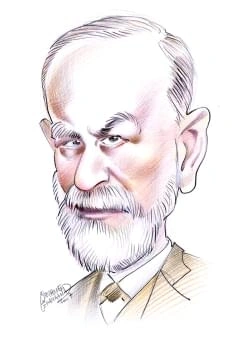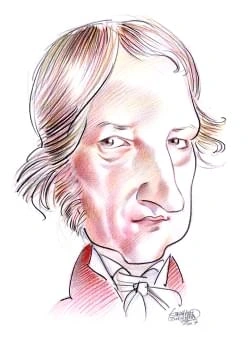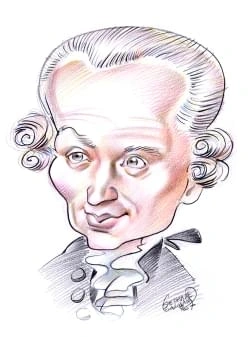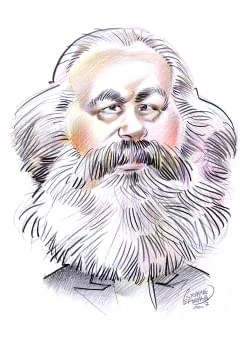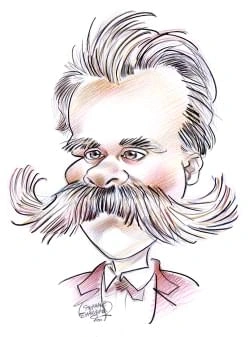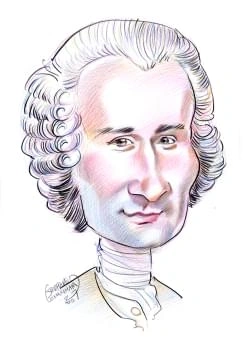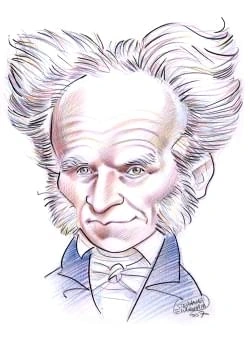235 résultats pour "industry"
-
Paris (city, France) - geography.
Théâtre Musical de Paris and the Théâtre de la Ville. Just north of the Hôtel de Ville is the Pompidou Center, also known as Beaubourg, an arts complex devoted to modern and contemporary art and design. The structure,in steel and glass and featuring brightly colored, exposed pipes and ducts, is the work of Italian architect Renzo Piano and British architect Richard Rogers. Itscontroversial pop-art design contrasts sharply with the overall gray hue of the city, and was criticized by many followin...
-
Windsor (Ontario) - geography.
IV ECONOMY Casino WindsorCasino Windsor, in Windsor, Ontario, opened in 1998. The hotel and casino provide an important boost to the economy of the city bycreating many new jobs and by attracting tourist traffic to the region.Richard Sheinwald/AP/Wide World Photos Windsor has been a base of American automobile companies from the beginning of the 20th century and it remains a major center of auto industry employment andmanufacturing. The Ford Motor Company built an auto manufacturing plant in Wi...
-
Windsor (Ontario) - Geography.
In the second half of the 20th century, Windsor experienced periods of boom and bust. After Ford closed its main assembly plant in the city in 1954, the city sunk intoeconomic depression. This period ended with the Canada-United States Automotive Products Agreement (Autopact) of 1965, which removed Canadian import tariffs onautomotive products as long as automakers produced as many cars in Canada as they sold in Canada. This agreement led to new industrial investment in the Windsorarea. A sharp...
-
Detroit - geography.
Automobile industrialist Henry Ford was born near Dearborn, Michigan, in 1863. Ford built his first automobile in 1893 and establishedhis own manufacturing company ten years later. The Ford Company headquarters are in Dearborn, as is the Henry Ford Museum,shown here, which tells of the transition of the United States from an agricultural to an industrial society, a change in which Fordplayed a central part.Townsend P. Dickinson/Photo Researchers, Inc. The Detroit city center also houses one of t...
-
Nashville - geography.
May event has grown into a major festival. In September the city hosts the Tennessee State Fair. One of Nashville's principle attractions is Opryland, a complex of entertainment and broadcasting facilities that offers live music shows, a resort and convention center,and shopping outlets. Since 1974 it has been the home to the Grand Ole Opry radio show, a country-music production that has not missed a broadcast since 1925. Percy Park and Edwin Warner Park provide open space, trails, playing field...
-
Pittsburgh - geography.
College of Allegheny County (1966), with branches in the city and suburbs. Pittsburgh has many outstanding cultural institutions. The Oakland district is where Carnegie Mellon University and the University of Pittsburgh are located. The CarnegieMuseums of Pittsburgh include The Carnegie Museum of Art (including the Scaife Galleries), which holds a distinguished motion-picture and video collection and a uniquestudy of architecture; the Carnegie Museum of Natural History, which displays an extensi...
-
Labor Unions in Canada - Canadian History.
job. Before collective bargaining begins, workers elect a bargaining committee. The bargaining committee determines the workers’ demands and strategy innegotiations with the employer. Local unions usually are part of national or international unions. These national and international unions employ a staff for organizing workers at the local level, doingresearch, educating union members about labor and political matters, and working with local union leaders. Unions hold regular conventions of dele...
-
St. Louis (city) - geography.
I
INTRODUCTION
St. Louis (city) or Saint Louis,
Between 1940 and 1990 the black population in metropolitan St. Louis nearly tripled. Blacks are most heavily concentrated in three areas in the St. Louis metropolitanregion: East Saint Louis, the North Side close to downtown, and an east-west belt extending from the waterfront to beyond Forest Park. In the 19th and early 20th centuries, areas to the north and south of the central business district were settled by immigrant working families from Germany, Ireland,and many Eastern European countrie...
-
-
Azerbaijan - country.
second most important industrial center after Baku. A Ethnic Groups Azerbaijan, including the autonomous exclave of Naxçivan, is populated mostly by ethnic Azerbaijanis, who are also known as Azeris. The ethnic composition of thecountry changed due to a civil war between the government of Azerbaijan and Armenian secessionists in the Nagorno-Karabakh enclave. Beginning in 1988, when thepeople of Nagorno-Karabakh unilaterally decided to secede from Azerbaijan, nearly the entire Azerbaijani popula...
-
Dominican Republic - country.
Manatees and sea turtles also live in Dominican waters. Common birds include blue herons, glossy ibis, flamingos, and brown pelicans. E Environmental Issues Urban dwellers of the Dominican Republic enjoy good access to safe water, but rural communities do not. While current water use is low relative to available resources,water shortages do occur. Although deforestation was once a serious problem in the Dominican Republic, by the beginning of the 21st century, the annual rate of deforestation h...
-
Sri Lanka - country.
acacias, and orchids are found in many areas. The animal life of Sri Lanka includes 88 species of mammals, 21 of which are threatened with extinction. The Asian elephant, cheetah, leopard, and several species ofmonkey are endangered and officially protected. The island’s many species of primates include the long-tailed langur, toque macaque, and slender loris. Other mammalsinclude the sloth bear, several species of deer, mongoose, and wild boar. Reptiles are numerous, with 144 known species. Som...
-
Medicine.
C Other Health Professionals Medicine is not restricted to physicians. A wide variety of health care practitioners work in this exciting field. By far the largest professional group is nurses. Registerednurses help physicians during examinations, treatment, and surgery. They observe, evaluate, and record patients’ symptoms, administer medications, and provideother care ( see Nursing). Nurse practitioners perform basic duties once reserved for physicians, such as diagnosing and treating common i...
-
Chicago (city, Illinois) - geography.
VI EDUCATIONAL AND CULTURAL INSTITUTIONS Chicago has one of the largest public school systems in the United States. The Chicago Board of Education administers the system in a centralized fashion; in recentyears it has been experimenting with local school councils as a means of partial devolution of authority. These councils, established in 1989, have authority in severalareas, including the ability to approve budgets and curriculum. In addition, Chicago has many private schools, including larg...
-
Yemen - country.
port. Al Ḩudaydah (155,110), in the Tih āmah, is the second largest port. Ta‘izz, (178,043), in the highlands above Aden, is an important commercial and light industrialcenter. Among Yemen’s larger towns are Şa‘dah, far to the north; Dham ār, Yarim, and Ibb, in the middle region; Al Mukall ā, on the southern coast; and in Hadhramaut,the towns of Shib ām, Say‘ ūn, and Tar īm. C Language Nearly all Yemenis speak Arabic. However, the country’s extremely rugged terrain, widely separated population...
-
Bangladesh - country.
F Environmental Issues Waterborne diseases such as cholera are a serious threat to public health in Bangladesh. Until the 1970s, many of Bangladesh’s people became sick from drinkingpolluted water drawn from surface rivers. Aid agencies such as the United Nations Children’s Fund (UNICEF) built shallow wells throughout the country to help provide asafe source of drinking water to Bangladesh’s poor. In the 1990s, however, it was discovered that many of these wells were contaminated by arsenic, a...
-
Zimbabwe - country.
contamination—especially from the dieldrin and DDT used in tsetse fly control—has significantly affected wildlife and human health. III PEOPLE AND SOCIETY OF ZIMBABWE In 2008 Zimbabwe’s population was estimated to be 12,382,920, giving the country a population density of 32 persons per sq km (83 per sq mi). With a birth rate of27 per 1,000 and a death rate of 22 per 1,000, Zimbabwe’s population growth rate is 0.6 percent. Life expectancy at birth was estimated at 40 years in 2008, downfrom 59...
-
-
Nashville - geography.
The metropolitan area has 10,549.3 sq km (4,073.1 sq mi). The important cities and towns in the metropolitan region include Franklin, site of a major battle of theAmerican Civil War (1861-1865), Murfreesboro, Gallatin, Lebanon, and Springfield. Nashville’s suburbs also have spread into adjacent counties in recent years, particularlyWilliamson County to the south. Nashville’s downtown is located on high, limestone bluffs overlooking the Cumberland River, with four bridges connecting the east and...
-
Blue Whale - biology.
Mature females may give birth once every two or three years. The gestation period lasts about 11 months. A single young is usually born the following spring; twins arerare. The females migrate to warm regions to give birth. The young nurse for seven or eight months, gaining as much as 90 kg (200 lb) per day. VII CONSERVATION STATUS Blue whales were not targeted by the whaling industry until the late 1800s after faster steam-powered ships were developed. The peak slaughter of blue whalesoccurre...
-
Ancient Egypt - history.
The Nile River runs through the ancient city of Thebes in eastern Egypt. For a time, beginning in 2040 bc, Thebes was the capital ofEgypt.Farrell Grehan/Photo Researchers, Inc. According to inscriptions and documents found by archaeologists, the Egyptians called their country Kemet, meaning “the Black Land,” a reference to the dark, fertile soil that remained after the Nile floodwaters had receded. They also used another term, Deshret, or “the Red Land,” a designation for the desert sands th...
-
Portland - geography.
Garden arena, which opened in 1995. In 2000 the Portland Fire, an expansion Women's National Basketball Association team, began play in the Rose Garden as well. VI ECONOMY Portland enjoys a diversified economy. Major manufactured products include paper, transportation equipment, metal products, sportswear, and electronic componentsand equipment. Major corporations headquartered in the metropolitan region include Nike, a leader in the manufacture of sports footwear, in Beaverton; Louisiana-Paci...
-
Antigua and Barbuda - country.
The monetary unit of Antigua and Barbuda is the East Caribbean (EC) dollar of 100 cents (2.70 East Caribbean dollars equal U.S.$1, a fixed rate since 1976). VI ENVIRONMENTAL CONCERNS The growth of the tourist industry has created some environmental problems, including uncontrolled disposal of sewage from hotels on the beach. Hotel developmentalso threatens the Antiguan mangrove trees. Water management is another major area of concern because of limited natural freshwater resources. Coral reefs...
-
San Diego - geography.
Qualcomm Stadium is the home of the San Diego Chargers, playing major league football. PETCO Park is the home of the San Diego Padres, playing major leaguebaseball. Major sporting events in the city include a professional golf tournament in February, hydroplane races on Mission Bay in late summer, and the Holiday Bowlpostseason college football game in December. VI ECONOMY The total value of all the goods and services produced in San Diego make it one of the most powerful economies in the worl...
-
Laser.
their atoms into laser light. Consequently, they are the most powerful continuous wave (CW) lasers—that is, lasers that emit light continuously rather than in pulses. C Liquid Lasers The most common liquid laser media are inorganic dyes contained in glass vessels. They are pumped by intense flash lamps in a pulse mode or by a separate gas laserin the continuous wave mode. Some dye lasers are tunable, meaning that the color of the laser light they emit can be adjusted with the help of a prism lo...
-
Liechtenstein - country.
principal crops are corn, potatoes, barley, wheat, and vegetables. Grapes are grown for wine production. Cattle and sheep are raised for meat and dairy products. B Manufacturing Liechtenstein has few raw materials and must import more than 90 percent of its energy sources. Consequently, Liechtenstein has no heavy industry. Instead, theprincipality has developed a number of efficient, small-scale industries that manufacture specialized goods such as false teeth and dental supplies, pharmaceutica...
-
-
Himalayas - geography.
result of deforestation the habitat of most of the wildlife has been destroyed. They are now restricted to special protected areas such as the Jaldapara and Kazirangasanctuaries in India ( see Kaziranga National Park) and the Chitawan preserve in Nepal. There are few animals in the Middle Himalayas because of extensive deforestation. In the Great Himalayas musk deer, wild goats, sheep, wolves, and snow leopards are found. The existence of the Abominable Snowman or Yeti has beenreported by highla...
-
Moscow (city, Russia) - geography.
V RECREATION About 30 percent of Moscow’s territory is occupied by parks and public gardens, which were important elements of Soviet city planning. Gorky Park, which providesactivities such as amusement rides and boating, sits on the right bank of the Moscow River; the park’s display of a retired Soviet space shuttle dominates the riverside.The Moscow Zoo is located just west of the city center. The Botanical Gardens, administered by the Russian Academy of Sciences, offers a diverse display of...
-
Carbon - chemistry.
Graphite is black and slippery and conducts electricity. In graphite, the atoms form planar, or flat, layers. Each layer is made up of rings containing six carbon atoms.The rings are linked to each other in a structure that resembles the hexagonal mesh of chicken wire. Each atom has three sigma bonds (with 120° between any two ofthe bonds) and belongs to three neighboring rings. The fourth electron of each atom becomes part of an extensive pi bond system. Graphite conducts electricity,because th...
-
Poverty.
economic and demographic trends, and (7) welfare incentives. A Overpopulation Overpopulation, the situation of having large numbers of people with too few resources and too little space, is closely associated with poverty. It can result from highpopulation density (the ratio of people to land area, usually expressed as numbers of persons per square kilometer or square mile) or from low amounts of resources, or from both. Excessively high population densities put stress on available resources....
-
Renaissance
I
INTRODUCTION
Renaissance, series of literary and cultural movements in the 14th, 15th, and 16th centuries.
the great writings of ancient Greece and Rome. Intellectuals continued to build on the ideas of the Renaissance during the 18th century Age of Enlightenment, a time when scientific advancements led to a newemphasis on the power of human reason. One of the early Enlightenment thinkers was French philosopher and writer Voltaire. He claimed that the Renaissance was acrucial stage in liberating the mind from the superstition and error that he believed characterized Christian society during the Middl...
-
Renaissance .
the great writings of ancient Greece and Rome. Intellectuals continued to build on the ideas of the Renaissance during the 18th century Age of Enlightenment, a time when scientific advancements led to a newemphasis on the power of human reason. One of the early Enlightenment thinkers was French philosopher and writer Voltaire. He claimed that the Renaissance was acrucial stage in liberating the mind from the superstition and error that he believed characterized Christian society during the Middl...
-
Technology.
loose soil in this region, known as the Fertile Crescent, was easily scratched for planting, and an abundance of trees was available for firewood. By 5000 BC, farming communities were established in areas known today as Syria, Turkey, Lebanon, Israel, Jordan, Greece, and the islands of Crete and Cyprus. Agricultural societies in these places constructed stone buildings, used the sickle to harvest grain, developed a primitive plowstick, and advanced their skills inmetalworking. Trade in flint al...
-
Finland - country.
Productive forestland is the most valuable natural resource of Finland. Spruce, pine, and silver birch are the principal trees used to manufacture wood and pulp andpaper products. Finland lacks coal and petroleum resources and is a net importer of energy resources. However, Finland does have significant deposits of peat, which is cut from thenumerous peat bogs that cover much of the north. Peat is an important heat source for homes, and it provides about 7 percent of Finland’s electricity needs....
-
-
Middle East - Geography.
though overall they have improved considerably since the 1970s. This variation reflects the different levels of wealth and development in countries of the Middle East. Inthe highly developed country of Israel the infant mortality rate was 8 deaths per 1000 live births in 1997. By comparison, the rate per 1000 live births was 71 in less-developed Egypt and 75 in Yemen. A Ethnic Groups and Languages Arabs make up the majority of the people of the Middle East, accounting for almost the entire popu...
-
Michigan - geography.
The interior location of Michigan in the northern part of North America results in a continental climate, characterized by four definite seasons with moist, mild to hotsummers and snowy, cold winters. Winds off of Lakes Michigan and Superior in winter create heavy snow accumulations in nearby areas. The tempering effects of LakeMichigan account for the presence of the state’s famous fruit-growing belt along the lake’s shore. Since the water is colder than the land in spring, the westerly windspa...
-
Michigan - USA History.
The interior location of Michigan in the northern part of North America results in a continental climate, characterized by four definite seasons with moist, mild to hotsummers and snowy, cold winters. Winds off of Lakes Michigan and Superior in winter create heavy snow accumulations in nearby areas. The tempering effects of LakeMichigan account for the presence of the state’s famous fruit-growing belt along the lake’s shore. Since the water is colder than the land in spring, the westerly windspa...
-
Pennsylvania - geography.
B Rivers and Lakes There are three major river basins in Pennsylvania: the Susquehanna, the Ohio, and the Delaware. Together they drain more than 90 percent of Pennsylvania’s landarea. Most of eastern and central Pennsylvania is drained by the Susquehanna and Delaware systems. The western part of the state is drained by the Allegheny andMonongahela rivers, which join at Pittsburgh to form the Ohio. In addition to the three major river basins, short streams flowing into Lake Erie drain the north...
-
Pennsylvania - USA History.
B Rivers and Lakes There are three major river basins in Pennsylvania: the Susquehanna, the Ohio, and the Delaware. Together they drain more than 90 percent of Pennsylvania’s landarea. Most of eastern and central Pennsylvania is drained by the Susquehanna and Delaware systems. The western part of the state is drained by the Allegheny andMonongahela rivers, which join at Pittsburgh to form the Ohio. In addition to the three major river basins, short streams flowing into Lake Erie drain the north...
-
Robot.
V IMPACT OF ROBOTS Robotic manipulators create manufactured products that are of higher quality and lower cost. But robots can cause the loss of unskilled jobs, particularly on assemblylines in factories. New jobs are created in software and sensor development, in robot installation and maintenance, and in the conversion of old factories and the designof new ones. These new jobs, however, require higher levels of skill and training. Technologically oriented societies must face the task of retra...
-
Yellowknife (Northwest Territories) - Geography.
VII HISTORY Indigenous nations have lived around Yellowknife Bay for thousands of years. The historic occupants were the Athapaskan-speaking Dogrib people, hunters of caribou.The Dogrib were displaced briefly in the early 19th century by the Yellowknife band of the Chipewyan nation, who moved into the area to participate in the fur trade.The bay, and eventually the city, were named for the Yellowknife band, whose name is believed to derive from their yellow knife blades hammered out of native...
- German Ideology - Summary
-
-
Washington (state) - geography.
The crest of the Cascade Range divides Washington into two distinct climatic regions. The area west of the Cascades, which is exposed throughout the year to rain-bearing winds from the Pacific Ocean, has a temperate marine type of climate that is characterized by mild wet winters and cool summers. The Cascades prevent themoist air blowing in from the Pacific from reaching eastern Washington. The Rocky Mountains on the eastern border also represent a climatic barrier. As a result, thesevere winte...
-
Washington (state) - USA History.
The crest of the Cascade Range divides Washington into two distinct climatic regions. The area west of the Cascades, which is exposed throughout the year to rain-bearing winds from the Pacific Ocean, has a temperate marine type of climate that is characterized by mild wet winters and cool summers. The Cascades prevent themoist air blowing in from the Pacific from reaching eastern Washington. The Rocky Mountains on the eastern border also represent a climatic barrier. As a result, thesevere winte...
-
Edmonton - Geography.
both of which built fur trading posts near present-day Edmonton in 1795. The posts were rebuilt several times, always along the North Saskatchewan River, whichprovided the traders’ main transportation route. The last move came in 1830, when Fort Edmonton was erected on the high bluff where the Alberta Legislature nowstands. For the next 50 years, the fort was the major trading center on the western plains. The modern city began to take shape after 1900, when central Alberta was opened to Europea...
-
New Hampshire - geography.
Washington. D1 Temperature The coldest parts of the state are in the White Mountains and the extreme north. Average January temperatures range from about -11° C (about 12° F) along theCanadian border to about -3° C (about 26° F) along the coast. July temperatures range from about 17° C (about 63° F) in the mountains to about 21° C (about 70° F)in the south. D2 Precipitation Precipitation is evenly distributed throughout the year over most of the state. However, the higher peaks of the White Mo...
-
New Hampshire - USA History.
Washington. D1 Temperature The coldest parts of the state are in the White Mountains and the extreme north. Average January temperatures range from about -11° C (about 12° F) along theCanadian border to about -3° C (about 26° F) along the coast. July temperatures range from about 17° C (about 63° F) in the mountains to about 21° C (about 70° F)in the south. D2 Precipitation Precipitation is evenly distributed throughout the year over most of the state. However, the higher peaks of the White Mo...
-
Ohio - geography.
conflict with modified Gulf air and causing frontal or cyclonic storms. Gulf air is dominant in summer. In fall, polar air passing over Lake Erie is modified, delaying thekilling frost along the adjacent shoreline. C1 Temperatures The mean annual temperatures for the state range from 9° C (48° F) in the northeast to 13° C (55° F) in the south. Average January temperatures range from -4° C(24° F) in the west to 2° C (35° F) in the south. July averages are 24° C (76° F) in the south and 23° C (73...
-
Ohio - USA History.
conflict with modified Gulf air and causing frontal or cyclonic storms. Gulf air is dominant in summer. In fall, polar air passing over Lake Erie is modified, delaying thekilling frost along the adjacent shoreline. C1 Temperatures The mean annual temperatures for the state range from 9° C (48° F) in the northeast to 13° C (55° F) in the south. Average January temperatures range from -4° C(24° F) in the west to 2° C (35° F) in the south. July averages are 24° C (76° F) in the south and 23° C (73...
-
Ottawa (city, Ontario) - Geography.
strike in November 1996. Finally, the outcome of the debate over Québec’s future within Canada will have a decisive impact on Ottawa because the National CapitalRegion includes parts of both Québec and Ontario. VII HISTORY Before European explorers arrived in Canada, the area around Ottawa was inhabited by hunters and gatherers of the Algonquian and Iroquoian ( see: Iroquoian Family) peoples. In 1613 the area was visited by Samuel de Champlain, founder of the French empire in North America. In...
-
-
Saskatoon - Geography.
were suspended after being charged with dumping two indigenous men at the outskirts of the city in the middle of the winter. They froze to death. The city requested aspecial Royal Canadian Mounted Police task force to investigate the matter. VII HISTORY Indigenous peoples inhabited the Saskatoon area for more than 5,000 years before white settlers arrived. The original settlement was designed in 1882 to be theadministrative center of a temperance colony led by Ontario Methodists. The city grew...
-
Montana - geography.
(191 sq mi), is Montana’s largest lake, and the largest natural freshwater lake in the contiguous states west of the Mississippi River. C Climate Climatic regions in Montana coincide roughly with the two major physiographic regions. In western Montana, as compared with the eastern plains area, winters tend tobe milder while summers are cooler. Precipitation is more evenly distributed throughout the year in the west, and it is cloudier and somewhat more humid in all seasons.In addition, the grow...
}})
